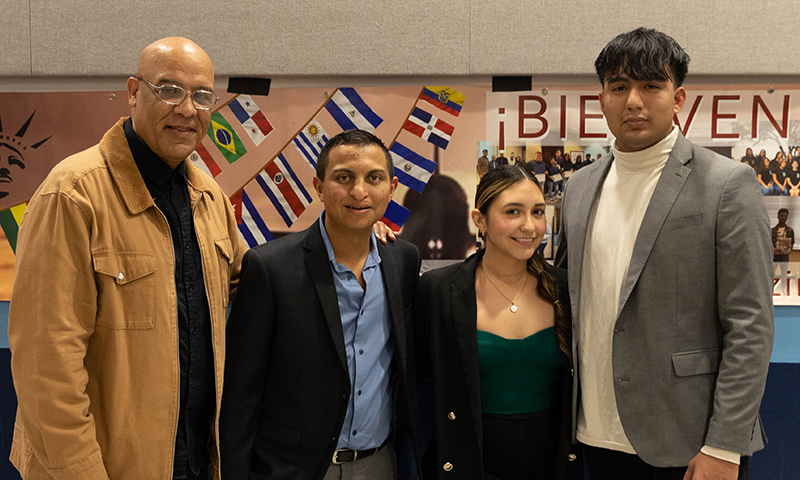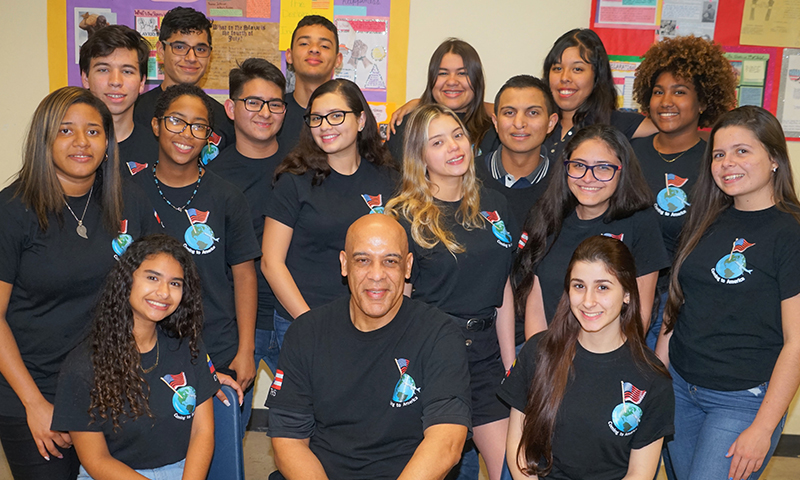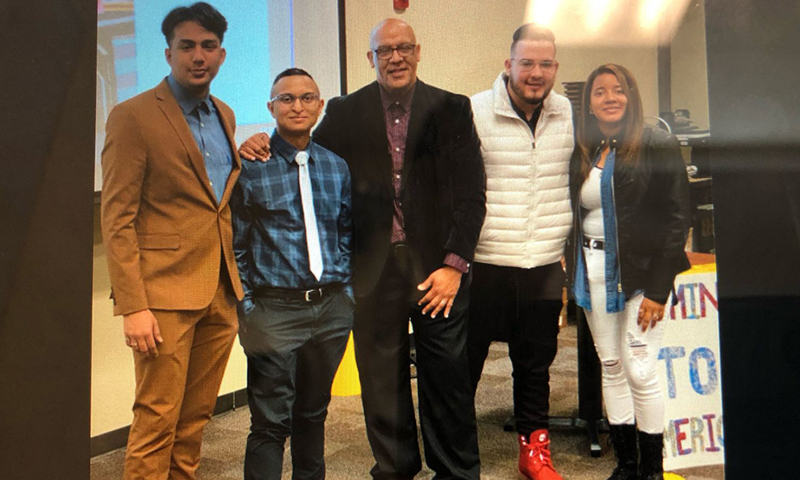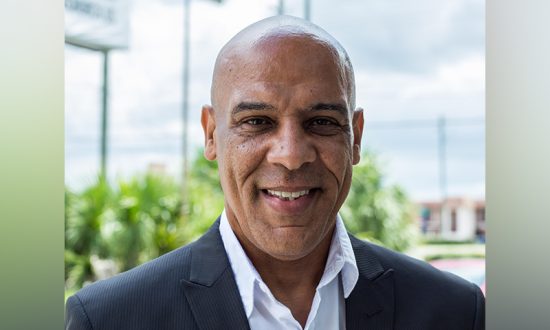As an English as a Second Language (ESL) teacher in New York City, Manuel Hernandez had many recently arrived students from all over the world. Determined to bridge that gap, he discovered culturally responsive teaching. Purpose called him to come to Central Florida and use his teaching experience to facilitate language learning and get young adults (particularly immigrants) college and career ready. After several years in Florida, he has been able to help open the academic doors that were shut for many of the recently arrived students. His Coming to America (CTA) educational program has impacted second language learners in Florida.
I love reading the writings of young immigrants who come to America because of circumstances they may not control, and they quickly develop views about this country and its promises and tell us about it. Although disadvantaged, they achieve relative success in their young adult lives –despite the hurdles they encountered. —Tony Baez, Every Child Coming to America
The excerpt serves as an epigraph to the book, Every Child Coming to America, written by ex-high school students, attests to the authentic expression that can result when young immigrant voices are invited to write, share, and publish their coming to America journeys of their selecting with actual audiences. Eight students participated in an afterschool experience that revolved around publishing the stories of young teenage immigrants who move to the United States from other countries or territories in the United States. Their collective stories mirror familial and cultural connections, resilience in the face of hardships, a profound awareness of place, and a commitment to success. Historically, these narratives were written in one of the most polarized times in the United States. Despite the rhetoric, and the uncertain days, weeks, and months of the acculturation process, the youth did not dissipate the idea of a better tomorrow inspired by culture, faith, and hope.
Building the Foundation of their Identity
Young adults who immigrate/migrate to the United States, because of poverty, political instability, and natural phenomena bring with them histories that are left untold. The educational system has forced teachers to teach for the test (standardized testing), and the writing it requires students to learn is mostly informative and argumentative. In the classroom, personal stories are rarely used as tools for the rewriting of the immigrant narrative. In Divided Borders, Juan Flores describes personal stories about the working-class Puerto Ricans in the United States, “The writings that give testimonial accounts and impressions of those years are scattered in diaries, correspondences and the often-short-lived revolutionary newspapers that still await compilation and perusal (pages 144-145).” Although Dr. Flores is describing a writing experience at the beginning of the twentieth century, one hundred years later, there is a new group of immigrants heading to the new New York of the 21st century, Florida, and young teenage students are reconstructing their narratives according to their own personal experiences. While informative and argumentative writing has its place in the standardized core curriculum of today, personal stories reveal central parts of young adults’ identities and provide the storyteller and the audience an opportunity to learn from each other.

Developing the Program
The students who participated in the writing experience were English Speakers of Other Languages (ESOL) or emerging bilinguals who relocated from Puerto Rico, Venezuela, Colombia, El Salvador, Guatemala, Japan, Mexico, Dominican Republic, Cuba, Nicaragua, and Jamaica to Central Florida. In one of the counties in Central Florida (Osceola), the population has grown from 107,728 in 1990 to 400, 653 in 2021. That is close to a 250% plus growth rate (Osceola County, Florida Population 2023 (worldpopulationreview.com). While the numbers grow by the second, the strategies and methodologies used to construct a bridge for emerging bilinguals are primarily targeted at an English-speaking audience. The state policy that provided a gateway (Florida Consent Decree) is outdated (1990) yet the provisions and policies remain the same for a newfound teen immigrant who arrives with a new set of cultural, historical, and political values.
Research sustains that the initial stage during the acculturation process is fierce. Young adults are mentally, emotionally, and socially formed, and coming to America during that stage is like asking a child to crawl in a jungle. The mental tug-of-war is relentless. However, when I scaffolded and crafted the idea of a personal story, students started to consider the possibility of reconstructing their journey and using writing as a force for expression and healing. A second language learner goes through a period of silence, and writing is the right domain to construct a bridge from the past, present, and future of the ESL student.

Exploring Publishing as a Bridge to College and Career Readiness
The writing experience paved the way for students to create and pursue goals and realize their dreams. As I recall the first weeks of the writing workshop adventure in 2017, there were more than a few of the first nine members of the afternoon club that went blank every time we were at the point of putting words on a Word document. One of the student authors reflects on the dichotomy of accepting and losing a new culture, “I smiled at the thought of seeing a part of my family I had not seen in years. I cried at the thought of leaving my family, my friends, and my home behind” (Coming to America, Divine Purpose Publishing, 3rd edition, p. 86). The Island of Puerto Rico is Paola’s home, and the displacement process is a rude awakening of what was lost in the process of relocating to a new country. These stories disrupt the dominant narrative of those coming to the United States who are looking to cash in on an opportunity. The only reason why her family moved to Florida was that Hurricane Maria destroyed their livelihood, and Florida was an escape route with unknown avenues, streets, and highways, pun intended. Paola’s story “Blessed” is an explosion of before, during, and after events of a very difficult time in her life.

Writing as a College and Career Readiness Tool
At the height of the success of the 2nd and 3rd editions of the initial memoirs, a college and career counselor sent me a prompt for a scholarship. One of the main requirements of the scholarship asked the student to write a personal story. When I examined the prompt, I knew that we had discovered “gold”. The students’ stories were the perfect storm for the young teenage immigrant. The students’ personal coming to America stories were perfect scholarship essays. Four student authors applied and four received a scholarship for their personal stories and academic efforts.
According to American anthropologist, Margaret Mead, “Learning to speak a new language fluently depends largely on establishing genuine communication with the speakers of that language.” Their stories are a testimony of how much English language skills can be developed once a culture is represented and reflected in their new-found educational experience. As a result, the pathway to America is portrayed vividly in their own words and according to how they experienced the journey to the new world.
As a result of using writing as a college and career readiness tool, dozens of students have received scholarships using their coming to America stories as scholarship essays. For some, the stories opened a door for full-ride scholarships. While the program continues to construct pathways with several partnerships in a local college, student authors have decided to come back to the program and become mentors of other recently arrived students. It is a revolving door experience with personal success, college, and career readiness, and mentorship as the core elements of its objectives.




